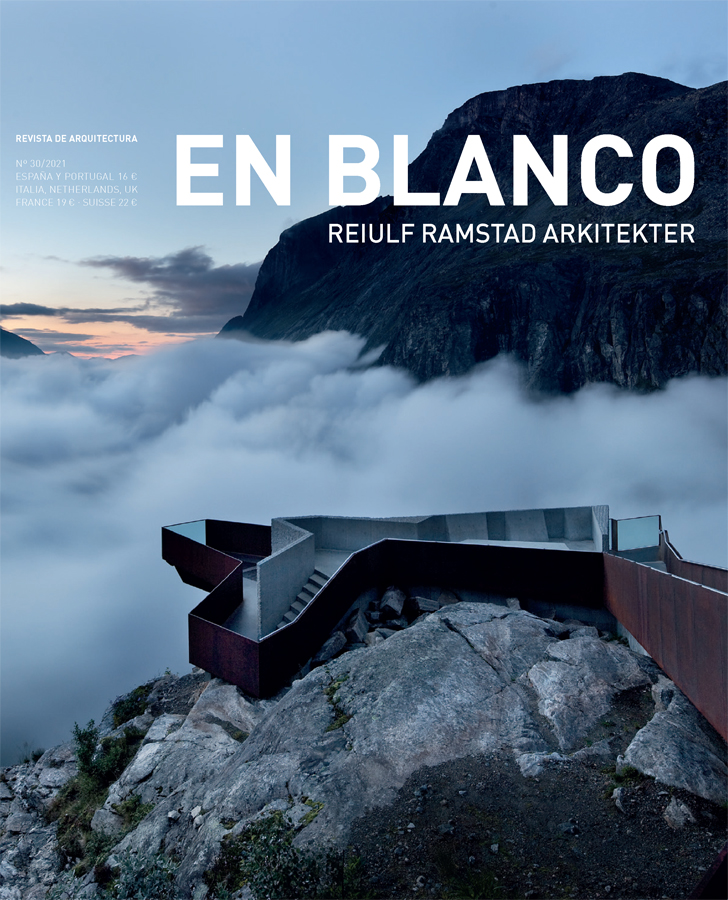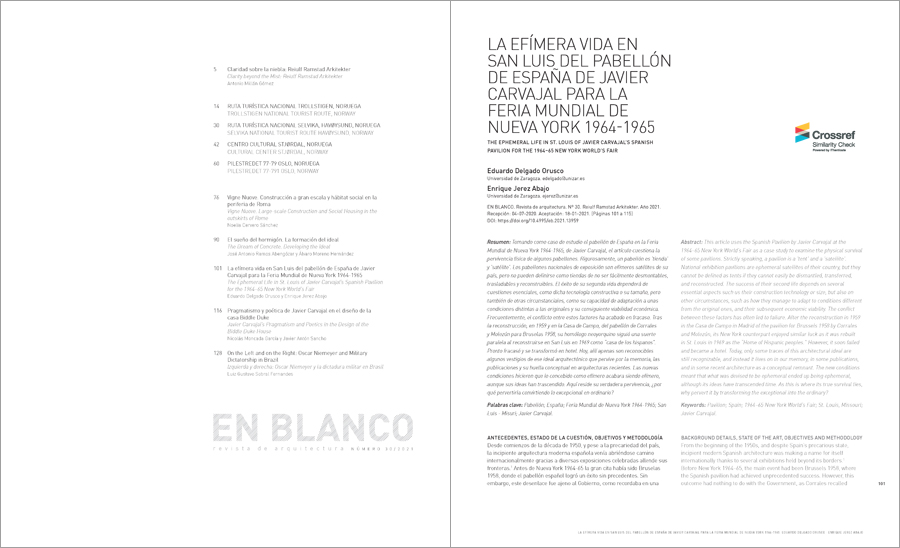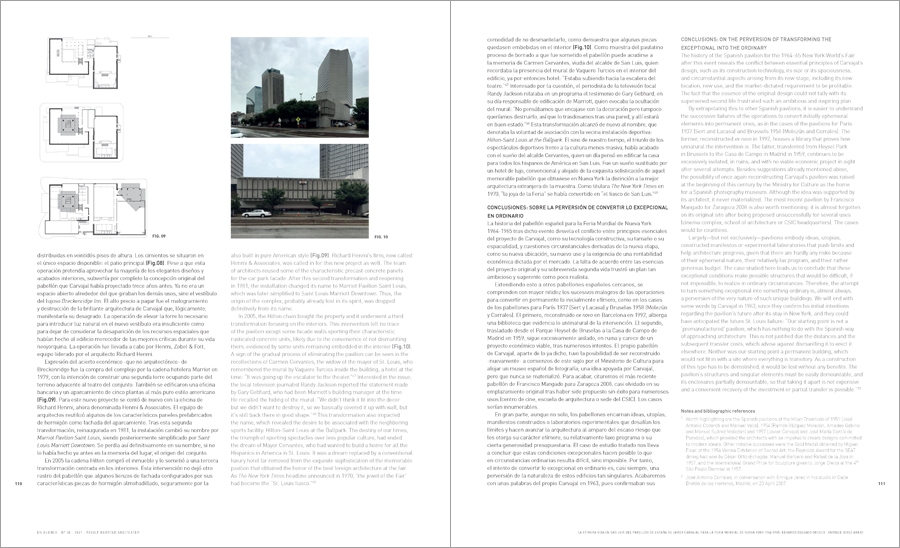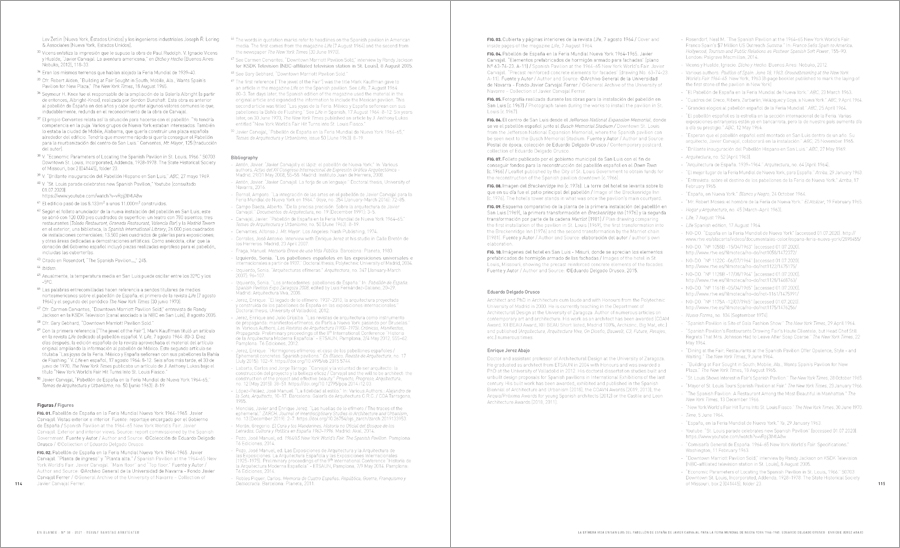
The ephemeral life in St. Louis of Javier Carvajal's Spanish Pavilion for the 1964-1965 New ork World's Fair
Hournal: En Blanco, nº30
Article: The ephemeral life in St. Louis of Javier Carvajal's Spanish Pavilion for the 1964-1965 New ork World's Fair
Date: 2021
Authors: Eduardo Delgado Orusco and Enrique Jerez Abajo
Pages: 101-115
This article uses the Spanish Pavilion by Javier Carvajal at the 1964–65 New York World’s Fair as a case study to examine the physical survival of some pavilions. Strictly speaking, a pavilion is a 'tent' and a 'satellite'. National exhibition pavilions are ephemeral satellites of their country, but they cannot be defined as tents if they cannot easily be dismantled, transferred, and reconstructed. The success of their second life depends on several essential aspects such us their construction technology or size, but also on other circumstances, such as how they manage to adapt to conditions different from the original ones, and their subsequent economic viability.
The conflict between these factors has often led to failure. After the reconstruction in 1959 in the Casa de Campo in Madrid of the pavilion for Brussels 1958 by Corrales and Molezún, its New York counterpart enjoyed similar luck as it was rebuilt in St. Louis in 1969 as the “Home of Hispanic peoples.” However, it soon failed and became a hotel. Today, only some traces of this architectural ideal are still recognizable, and instead it lives on in our memory, in some publications, and in some recent architecture as a conceptual remnant. The new conditions meant that what was devised to be ephemeral ended up being ephemeral, although its ideas have transcended time. As this is where its true survival lies, why pervert it by transforming the exceptional into the ordinary?









